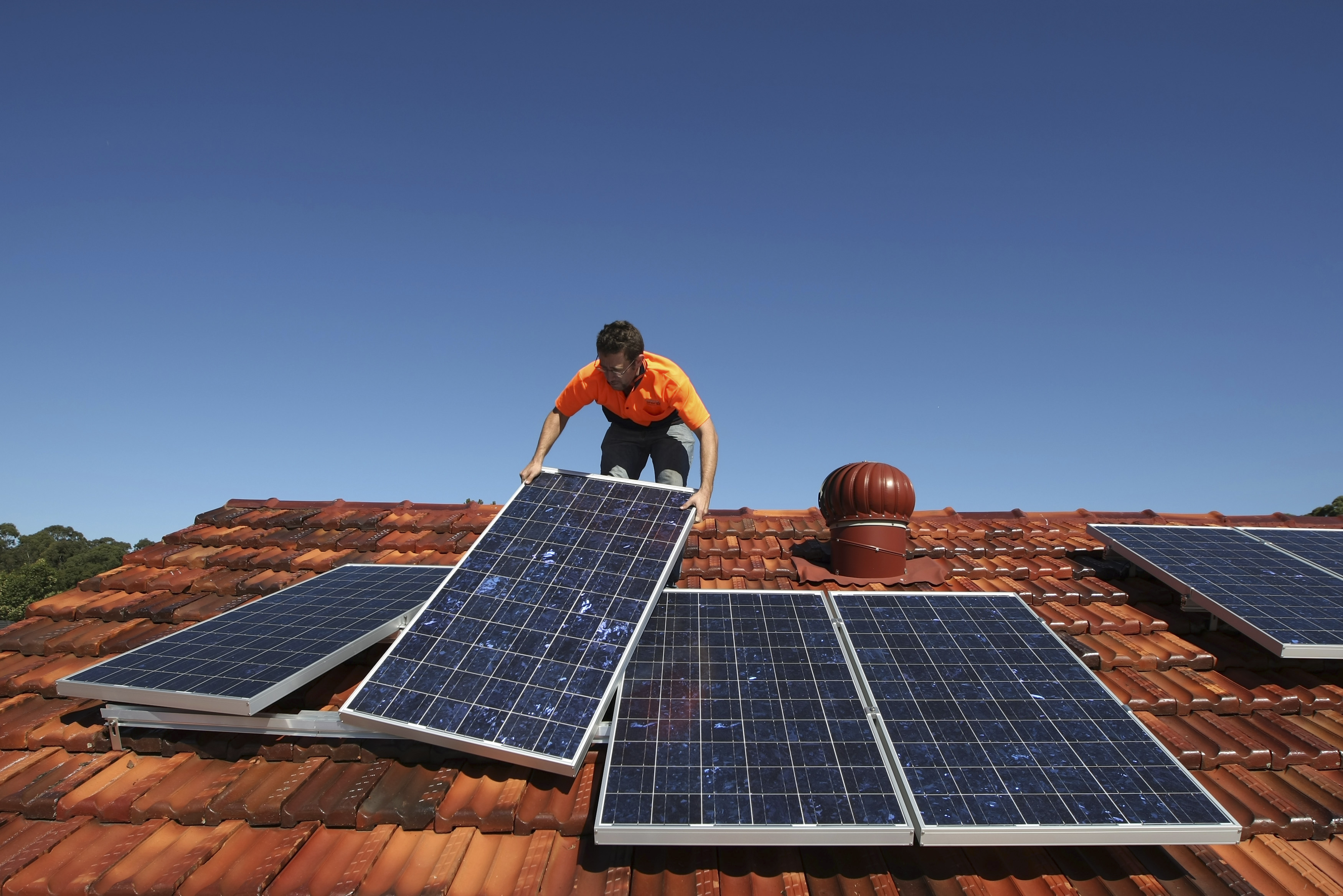Can Google bring solar power to the masses?
A new initiative aims to make installing solar less expensive


Is there anything better than powering your home with solar?
The electricity generation comes with no air or water pollution. There are no carbon dioxide emissions to contribute to climate change, outside of the manufacture of solar panels. Because they're on roofs, land use impact is basically nil. Solar power generates more jobs per unit of energy than fossil fuels, and those jobs can't be outsourced because construction is local by definition. It also consumes much less water than sources like coal, natural gas, or nuclear, preventing strains on community supplies.
But there's a big hurdle: The systems generally cost more than $10,000 a pop, an imposing chunk of change to finance or borrow for all but the luckiest Americans.
The Week
Escape your echo chamber. Get the facts behind the news, plus analysis from multiple perspectives.

Sign up for The Week's Free Newsletters
From our morning news briefing to a weekly Good News Newsletter, get the best of The Week delivered directly to your inbox.
From our morning news briefing to a weekly Good News Newsletter, get the best of The Week delivered directly to your inbox.
That's where a new fund put together by SolarCity and Google comes in. At $750 million, with $300 million of that from Google, it aims to get customers over the upfront cost, thus driving accessibility to household rooftop solar down into the middle and lower-middle class.
"It absolutely has democratized solar in a way, and made it more accessible," Jonathan Bass, SolarCity's vice president of communications, told The Week.
Similar purchasing deals already exist, such as solar leases and power purchase agreements. The two work slightly differently, but they boil down to a third party handling the upfront installation and maintenance costs, so the customer just pays a manageable monthly amount for the power. There can be the option to eventually purchase the system outright down the road.
The SolarCity-Google fund will provide both, but with an added twist. The explicit goal of the business model is to break the assumption that green energy is more expensive than traditional electricity. "It's an equation with a few variables," Bass explained, and they include the local cost of retail electricity — higher in some areas of the country than others — along with differences in sun exposure in different regions and local policy incentives.
A free daily email with the biggest news stories of the day – and the best features from TheWeek.com
SolarCity won't be able to make the pieces fit everywhere. But they're open for business in 14 states, and think they can reach 25,000 new households and add 500 megawatts in new capacity — a big addition to the 190,000 customers and 1,000 megawatts SolarCity boasted at the end of 2014.
For many customers, the thinking is: "'If you can lower my overall energy bill — if I pay less for solar than I'm paying for utility power today, with no out of pocket costs up front — that's something I'd love to do,'" Bass said. "Those are homeowners that really value $20, $40 a month in savings. That can add up to thousands of dollars over the years."
One example of how this can work is the California Solar Initiative, which began in 2007 in an attempt to subsidize homeowners over the upfront-cost hump in a similar manner. By 2011, it massively boosted rooftop solar for homeowners making between $50,000 and $75,000 a year by 444 percent, compared to 381 percent for those making $75,000 to $100,000. Those making over $100,000, and less than $50,000, saw considerably smaller increases.
Now, the median household income in California in that time period was roughly $61,000. So the above numbers introduce a caveat: There's a natural limit to how far down the income ladder these sorts of deals can extend while still being done sustainably and ethically.
The 2008 housing crisis is an extreme example of this: Among many, many problems, profit predatory lenders suckered people into mortgages they could never repay over the long term. Another example is the rent-to-own furniture business model, which can bleed the poor for many times the cost of the furniture itself.
So those are the signs of trouble to look for in how an agreement like this can go awry. But right now the Google-SolarCity venture seems to be on the up and up. They've managed to lower the credit score required from customers to 650, but it's unclear they can or want to go below that.
"The default rates are extremely low," Bass said. "If you're giving someone the chance to pay less for solar electricity than they pay for utility power, they're not motivated to stop making those payments. Because if they stop they're just going to replace it with a higher utility cost."
Moreover, lower down the income ladder most everyone rents their apartment or home rather than buying, at which point solar providers are dealing with the building owner and management — a fundamentally different business model. So the financial health and sustainability of these solar deals are bound up with the health and sustainability of homeownership.
So what's needed is a pincer move. From the top down, these sorts of business model and financial innovations can increase access to goods and services for lower income Americans. But they can only go so far. In the end, if you're looking to create that access for everyone, there's no substitute for active policy efforts to rebuild Americans' economic security and purchasing power from the bottom up.
That's true whether your goal is helping everyone participate in the old-fashioned "American dream" of homeownership, moving the entire economy onto a green energy footing, or really anything else.
Jeff Spross was the economics and business correspondent at TheWeek.com. He was previously a reporter at ThinkProgress.



